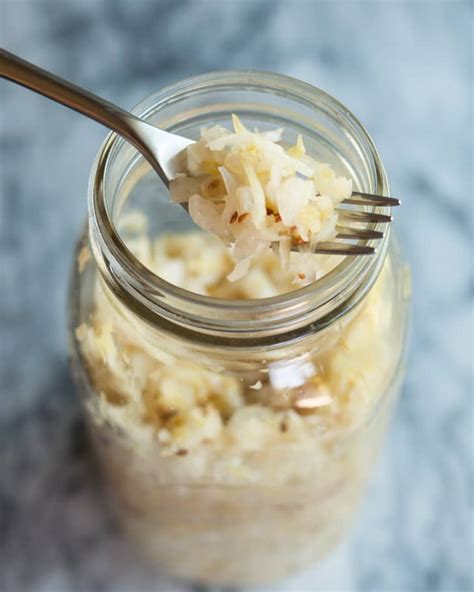The Best Sauerkraut Recipe Ever: Homemade Tangy & Tasty
Are you ready to experience the best sauerkraut recipe ever? Forget store-bought; this guide will walk you through creating a homemade sauerkraut that's unbelievably tangy, crisp, and flavorful. Perfect for adding a zing to your meals or enjoying as a standalone snack, this recipe is a must-try for sauerkraut enthusiasts and novices alike.
Why Make Sauerkraut at Home?
Homemade sauerkraut offers several advantages over store-bought varieties:
- Control over Ingredients: You decide the quality of cabbage and salt, avoiding any unwanted additives.
- Superior Taste: Homemade sauerkraut boasts a superior depth of flavor compared to mass-produced brands.
- Cost-Effective: Making your own is surprisingly affordable, especially if you buy ingredients in bulk.
- Health Benefits: The fermentation process enhances the probiotic content, boosting gut health.
Ingredients for the Best Sauerkraut Ever
- 2 pounds green cabbage, cored and finely shredded (about 1 medium-large head)
- 2 tablespoons kosher salt (non-iodized) – Important: Do not use table salt!
- 2 tablespoons caraway seeds (optional, but highly recommended)
- 1 teaspoon red pepper flakes (optional, for a spicy kick)
Equipment Needed
- Large non-reactive bowl (glass or ceramic)
- Large clean jar (at least 1-gallon capacity)
- Weight (e.g., a clean stone, a bag of rice, or a smaller jar filled with water)
- Airtight lid
Step-by-Step Instructions: Crafting the Perfect Sauerkraut
Step 1: Prepare the Cabbage
Finely shred the cabbage. The finer the shred, the quicker and more even the fermentation will be. You can use a food processor or do it by hand—it's a great arm workout!
Step 2: Combine Ingredients
In the large bowl, thoroughly combine the shredded cabbage, kosher salt, caraway seeds (if using), and red pepper flakes (if using). Massage the salt into the cabbage for at least 5 minutes. This helps to draw out moisture and start the fermentation process. You'll notice the cabbage softening and releasing liquid.
Step 3: Pack the Jar
Firmly pack the cabbage mixture into the clean jar, pressing down to remove air pockets. Make sure the cabbage is submerged completely in its own released liquid—this is crucial for preventing unwanted mold growth.
Step 4: Weigh It Down
Place the weight on top of the cabbage, ensuring it's fully submerged. The weight keeps the cabbage under the brine, promoting proper fermentation.
Step 5: Fermenting Your Sauerkraut
Cover the jar with the airtight lid and let it ferment at room temperature (ideally around 65-75°F). The fermentation process usually takes 2-4 weeks, depending on temperature. You’ll notice bubbles forming—this is a good sign!
Step 6: Checking and Tasting
During the fermentation, check your sauerkraut every few days. If the cabbage isn't fully submerged, add more brine (from the top) or use a heavier weight. After about a week, you can start tasting to see if it's reached your desired level of sourness. It’s all about personal preference!
Step 7: Refrigeration
Once your sauerkraut reaches your preferred tanginess, transfer the jar to the refrigerator to slow or halt the fermentation process. Refrigerated sauerkraut will keep for several months.
Serving Suggestions for Your Homemade Sauerkraut
Your amazing homemade sauerkraut is ready! Use it in:
- Reubens: A classic pairing!
- Sauerkraut Balls: A fun and tasty appetizer.
- Hot Dogs and Sausages: Add some tang and crunch.
- Salads: For a unique and flavorful twist.
- As a side dish: Enjoy it with a variety of meals.
Tips for Sauerkraut Success
- Use non-iodized salt: Iodized salt can inhibit fermentation.
- Keep it clean: Sterilize your jar and equipment to prevent mold.
- Patience is key: Allow sufficient time for the fermentation process.
- Experiment with flavors: Add different spices like dill, mustard seeds, or juniper berries.
This best sauerkraut recipe ever is your gateway to a world of delicious, homemade goodness. So, gather your ingredients, and let's get fermenting!
